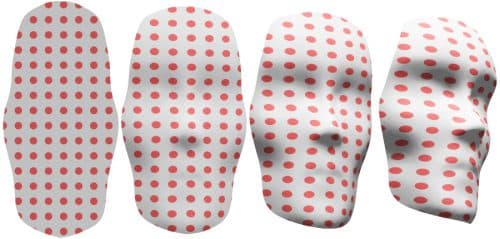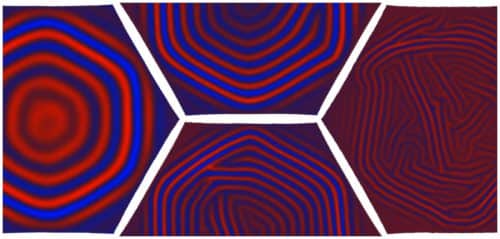We are used to thinking of matter in one of three states of aggregation: gas, solid, or liquid. But nature, as we know, sometimes likes to complicate matters. As part of these amusements, he created "liquid crystals", says Prof. Hillel Aharoni from the Department of Physics of Complex Systems at the Weizmann Institute

We are used to thinking of matter in one of three states of aggregation: gas, solid, or liquid. But nature, as we know, sometimes likes to complicate matters. As part of these amusements, he created "liquid crystals", a family of states of aggregation in which the structure of matter is more ordered than a liquid, yet less ordered than the way atoms or molecules are organized in a solid crystal.
These crystals, and the way in which they are sometimes integrated into other material structures, such as polymers (something that creates a certain type of "soft materials"), are among the research areas focused on by Dr. Hillel Aharoni, who recently joined, as a senior researcher, the Department of Physics of Complex Systems at the Institute Weizmann for science.
One type of materials that Dr. Aharoni is interested in are called "nematic elastomers". These are a kind of elastic materials with a defined orientation (for example, a network of polymers, in which liquid crystal molecules are embedded). At every point in such a material structure, there is a definite direction along which the material is "programmed" to shrink or swell, in response to a change in one or another "environmental" factor, such as temperature, magnetic field, light, etc. In other words, we are used to thinking that when a substance is heated, it spreads equally in all directions. But "nematic elastomer", reacts to an increase in temperature by spreading in a specified direction only.
This means that a large sheet made of such a material (whose chemical composition is uniform but the direction "embedded" in it is different from point to point), and which will be exposed to an increase in temperature, will not spread along and across its planar structure only - but will adopt a different, new geometric structure, and in fact will become a curved XNUMXD surface. This is a kind of structural "metamorphosis", resulting from the structure of this material.
Dr. Aharoni and his research partners showed how it is possible to control the directionality embedded in the nematic liquid crystals integrated into a polymer network, so that it is possible to predict - and in fact, even dictate - what new shape (geometry) the material will adopt, in response to a change in a certain factor (exposure to light, increase in temperature, change in the strength of the magnetic field, and more). In a certain sense, this can be seen as a kind of "sculpture", or "design" of a material, using a complex mathematical model - which replaces the traditional chisels and chisels. Dr. Aharoni says that in this case the tool used for design is part of the material itself, and is not an external tool, such as an ismel.

Liquid crystals present: a fascinating jungle of structural defects
Other subjects that Dr. Aharoni is interested in are the characterization of topological defects in liquid crystals, which are a kind of points or lines in space where the structure of the material is broken. Such defects greatly affect the properties of the material.
Another field of research, which may create a bridge between physics and the life sciences and medicine, is the attempt to understand and predict patterns of wrinkle formation (similar to the wrinkles that develop in the skin of older people. This research is based on the mathematical similarity between the patterns of wrinkles that are formed in different sheets (including skin), and the behavior of Certain liquid crystals. In this way, it is possible, for example, to calculate and see how a certain person's face will look - and which wrinkles will mar his face - decades from now.
